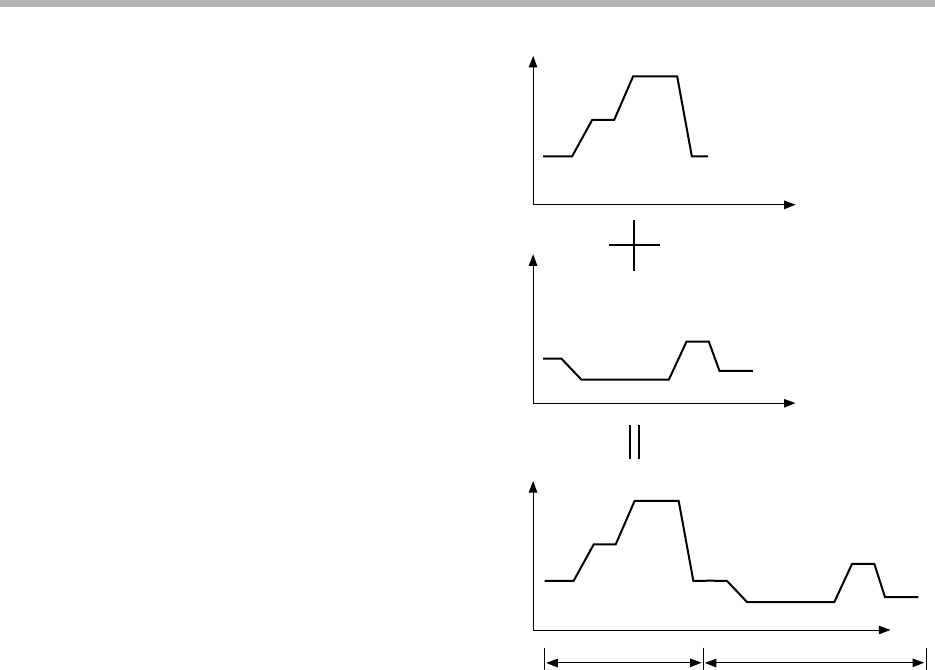Clock Radio User Manual
Table Of Contents
- CP-UM-5093E-04.pdf
- SAFETY PRECAUTIONS
- Contents
- Chapter 1. GENERAL
- Chapter 2. NAMES & FUNCTIONS OF PARTS
- Chapter 3. MOUNTING
- Chapter 4. WIRING
- 4-1 Wiring Precautions
- 4-2 Compensating Lead
- 4-3 Terminal Connections
- 4-4 Layout of Terminals and Recommended Lead Draw-out Direction
- 4-5 Connecting the Ground and Power Supply
- 4-6 Wiring of Standard and Add-on Terminal Base
- 4-7 Connecting Inputs (analog inputs)
- 4-8 Connecting control outputs (outputs 1, 2)
- 4-9 Connecting auxiliary outputs (outputs 2, 3)
- 4-10 Connecting Event Output (relay output)
- 4-11 Connecting Time Event Output (open-collector)
- 4-12 Connecting External Switch (RSW) Input
- 4-13 Connecting for Communications
- 4-14 Isolating Inputs and Outputs
- Chapter 5. FUNCTIONS
- Chapter 6. OPERATION
- Chapter 7. PARAMETER SETUP
- Chapter 8. PROGRAM SETUP
- Chapter 9. TROUBLESHOOTING
- Chapter 10. SPECIFICATIONS
- Chapter 11. CALIBRATION
- Index

Chapter 5. FUNCTIONS
5-10
SP
SP
SP
Program No.2 pattern-linked to program No.1
Program No.1
Program No.2
Time
Time
Time
Program No.1 Program No.2
■ Pattern link
“pattern link” is a function for linking patterns together.
The link destination program No. is set by the pattern
link item.
When the pattern link item is set to 0 (initial setting),
patterns are not linked. When the No. of the current pro-
gram itself is set to the pattern link item, this creates an
endless loop.
If the SPs at the link source end point and the link desti-
nation start point do not match, the SP changes in a
stepped manner during link operation.
When cycle operation has been set, the pattern link func-
tion works after cycle operation has ended. After pattern
link operation ends, operation begins from the No.1 seg-
ment of the link destination pattern, so operation is re-
started with the settings of events 1 to 3 and time events
1 to 5 cleared.
If PV start is programmed to the link destination pattern,
the PV start function operates after the link is made.
After the link has been made, PID operation is not ini-
tialized, and is continued.










